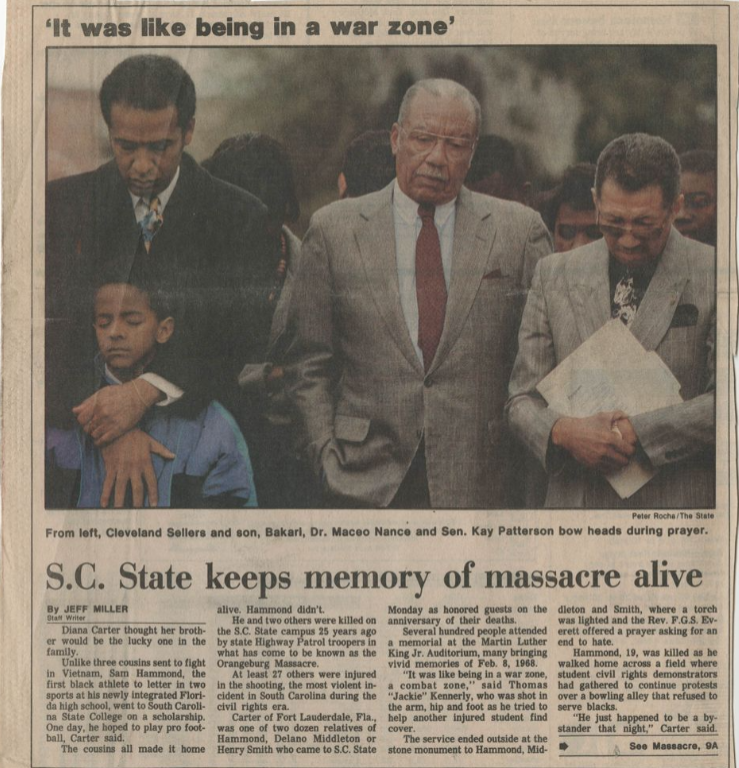» Remembering the Orangeburg Massacre by Kangkang Kovacs
On the night of February 8, 1968, a bon fire was lit by the entrance of South Carolina State’s campus in Orangeburg, South Carolina. Some two hundred students gathered by the fire. They were protesting against segregation, police brutality, as well as a failure of budget approval for the SC State, a Historically Black Colleges and Universities (HBCUs). The Civil Rights Act passed four years ago, but segregation continued to spread in states across the country, especially in Southern states. Earlier that week Harry K. Floyd, who owned the All-Star Triangle Bowling Lanes claimed that it was exempt from segregation laws because it was private property. A group, that was comprised of mostly college students held a protest outside of the bowling alley. The police arrived and preceded to beat up Black students, male and female alike, with billy clubs. Tension and anxiety grew over the days that followed. Shortly after the first police confrontation, Governor Robert Evander McNair called in the National Guard. Cleveland Sellers, a native South Carolinian and civil rights activist, joined the student protestors by the bonfire.
What we see is a typescript copy of an article written by Sellers in 1968, recounting exactly what happened that night. As firefighters carried out Chief Strom’s order to put out the bonfire, an officer was struck with a heavy wooden banister. Without any warning, the police opened fire towards the unarmed protestors in pitch dark. The shooting lasted for eight seconds, resulting in the death of three students and the wounding of tens more. They were all shot in the back and sides; some were shot while lying on the ground.
Sellers himself came under fire both literally and figuratively. He was shot in the left shoulder and charged for inciting a riot. In 1970, Sellers was trialed and convicted in the South Carolina state court and served seven months in State prison. The police officers were trialed as well. They testified that they acted in self-defense. Despite a lack of evidence to support such claims, all officers were acquitted.
One of the officers, Corporal Joseph Lanier, Jr. said: “I was just a soldier. I was a person that was there reacting to what my leaders had told me to do.” The police officer relied on war rhetoric to explain his actions towards his fellow Americans.
In a newspaper article discussing the anniversary and annual memorial for the victims it was noted that among the victims of the Orangeburg Massacre was nineteen-year-old Sam Hammond, who was a freshman at SC State and the first Black athlete to letter in two sports at his newly integrated Florida High School. Hammond had three cousins who were sent to fight in Vietnam. The Orangeburg Massacre happened within days of the Tet Offensive in the Vietnam War. By the end of the war, all three cousins made it home alive. Hammond did not. The experiences of Hammond and his family demonstrate that Black people were fighting on multiple fronts.
The two other individuals who also lost their lives on the night of Feb. 8, 1968 were freshman Henry Smith (18) and high school student Delano Middleton (17).
To find out more about the Orangeburg Massacre we encourage you to review the digital exhibit on the Lowcountry Digital History Initiative and the digital collections on the Lowcountry Digital Library.


